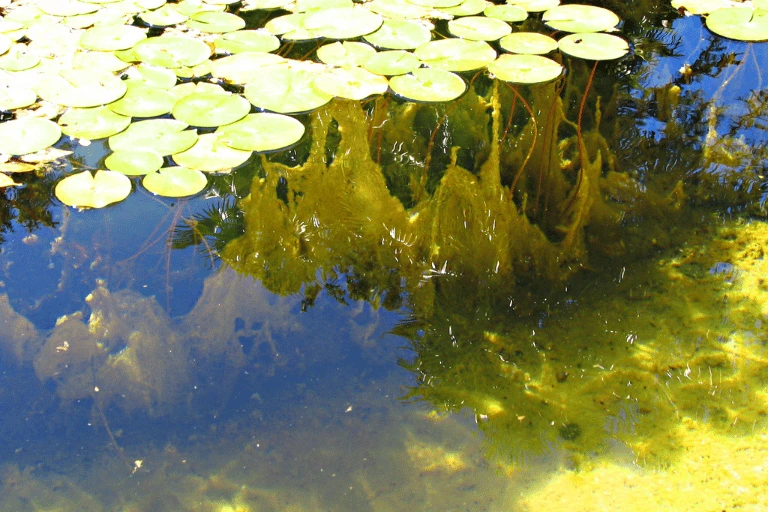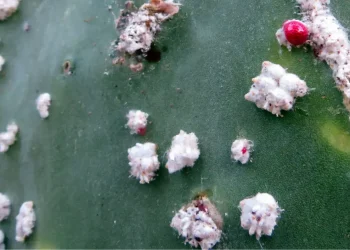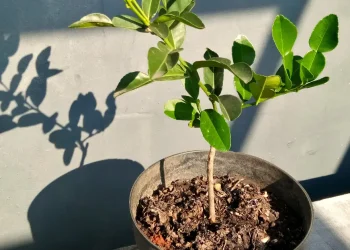When you look at tranquil waters, you’d never guessed how the round green leaves with pink or white blossoms of lily pads look below the water’s surface.
When all you see is the floating leaves, you may be wondering if even lily pads have roots and, if, how deep are lily pad roots? The answer lies hidden beneath the surface. Indeed, lily pads do have roots, and quite a big one! They usually conquer your whole pond, and once they are established, they are so hard to kill.
In this article, we’ll dive deep down below the water and inspect the robust root system of lily pads. And who knows, maybe we’ll even find a treasure down there.
Generally about Water Lillies
Lily pads naturally grow in freshwater in tropical regions. But these aquatic plants have naturally evolved to thrive almost everywhere. Certain varieties of water lilies have successfully created a certain level of tolerance even to colder climates.
Water Lillies grow in still waters, where their thick roots sprout from rhizomes nestled on the bottom of the water. These roots interlace, forming a web of roots supporting the lily pads and flowers above the water’s surface.
These networks of roots can get quite invasive very quickly, and before you know it, they’ll take over the entire pond. They both block other plants from growing there and also block the sun from getting to other plants. This can all also happen very fast. Lily pads can grow and take over about a foot (30 centimeters) a year.
Even if you manage to remove visible roots, the water lily will likely come back, thanks to its deep rhizome system.
Everything about Lily Pad’s Roots
Underwater lily pad roots possess a unique physical description that sets them apart in the submerged world. These roots, emerging from rhizomes and extending from the water’s bottom to the lily pad leaf floating on the surface, boast a fibrous texture with a light-colored outer surface. As they intertwine and interconnect, they form a comprehensive web beneath the water’s surface.
Beyond their anchoring role, the underwater lily pad roots serve essential functions for the plant’s revival. One primary function is nutrient absorption. These roots possess tiny root hairs that effectively absorb water and essential nutrients, sustaining the growth and vitality of the water lily.
You may now ask if lily pad roots are like standard roots if they even grow underground. However, unlike traditional plants, water lilies don’t penetrate the soil beneath the water. Instead, they remain suspended in the water column, utilizing the surrounding water and sediments for nutrients.
Because of that, if you want to keep water lilies as a plant, they are easier to take care of. You usually don’t need to provide additional nutrients to the water ecosystem.
Another interesting fact is that lily pad roots has also the ability to enter a dormant state when environmental conditions become unfavorable. During periods of drought or when winter approaches, the roots can go into a dormant phase, conserving energy until the conditions are good again.
What is the Spongy Green Thing Growing at Lily Pad Roots?
Apart from balanced nutrients, every plant also needs oxygen. Above the water, land plants get oxygen through tiny air pockets between soil granulates. However, because Lily pads usually grow in muddy ponds, where the sand and dirt are very soaked and compacted, it does not have enough oxygen in them, and the rest of the space is filled with water. So these plants need a different way to provide oxygen to their roots.
This is provided by aerenchyma tissue, a spongy green growth that you may notice growing on the surface of the lily pad’s roots. And just a sponge, this tissue has thousands of small air channels through which oxygen can enter the roots. This also helps the roots to stay afloat and maintain an optimal position in the water.
How Deep are Lily Pad Roots?
Now to the main point of this article, How deep are lily pad roots? The short answer is that very.
Lily pad roots do not grow straight up towards the water’s surface, towards the lily pard itself. They are instead twisting and meandering through the water. As the roots extend from the rhizomes below, they navigate the aquatic environment, entwining with one another and creating a complex network. That way, one water lily can grow roots that are even more than 6 feet (2 meters) long.
Simultaneously, a single rhizome of a lily pad can range from a few inches to several feet in diameter. Depending on the size, there can be even multiple water lilies growing from one rhizome.
Are Lily Pad Roots Edible
This may surprise you, but certain species of water lilies are actually edible and enjoyed by many cultures around the world, including roots. But before you plan to have a feast on lily pads, you should check the edibility of your species.
When properly prepared, water lily rhizomes offer a texture similar to potatoes and a natural, a bit sweet taste.
Conclusion
While you can’t see them, lily pads indeed have roots that play a crucial role in anchoring them securely and absorbing nutrients from the surrounding water.
The depth to which lily pad roots extend can vary, and not only on the depth of the pond they grow in, Because these roots don’t grow straight up but are twisted in all possible directions. Because of that, a water lily can even grow roots longer than 6 feet (2 meters) long.












